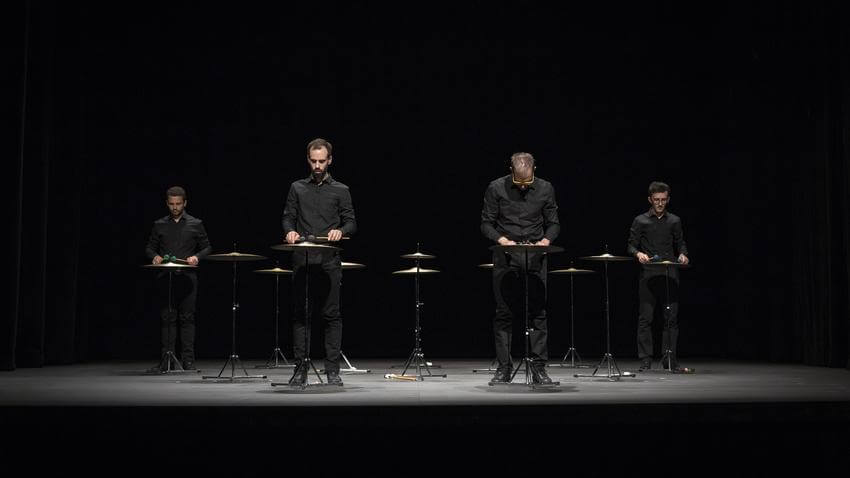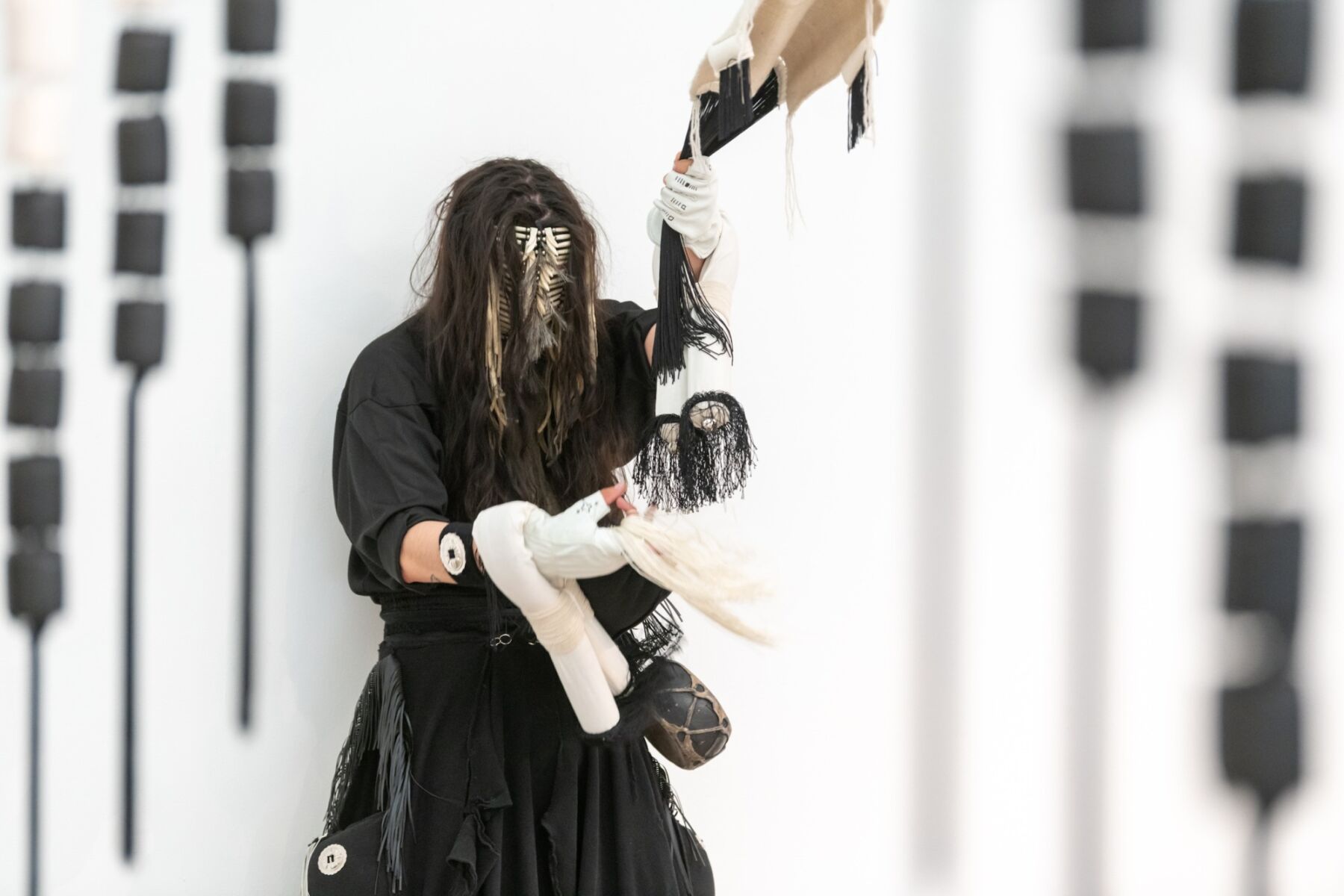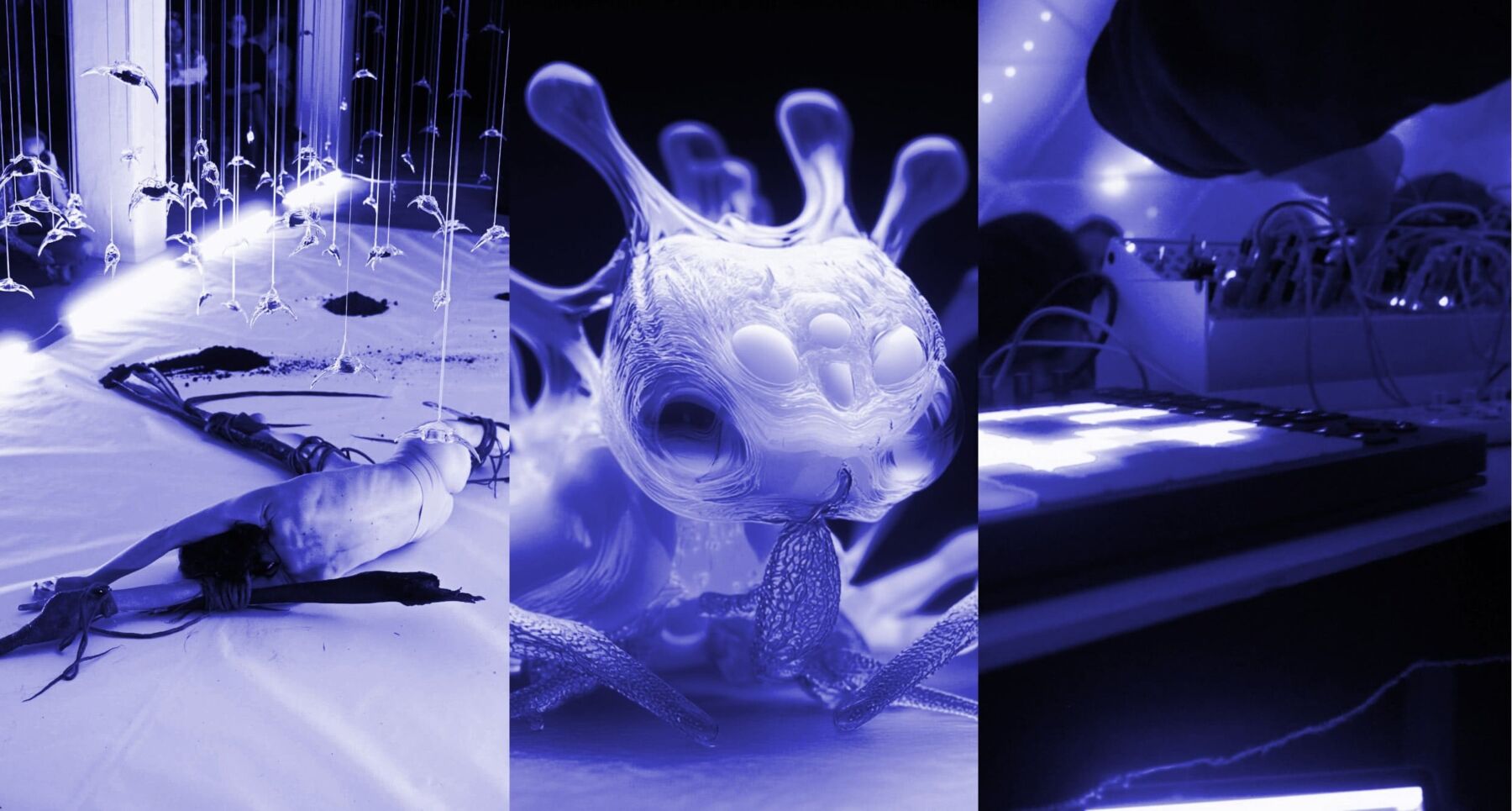Text by CLOT Magazine

Ryoji Ikeda was back at the Barbican for a dual show. Both parts are contrasting but complementary to the work of the groundbreaking Japanese audiovisual composer. Ikeda has been exploring the intricacies of our digital age from the core of both data and coding in electronic audiovisual artworks that have been blurring conceptions of art and digital sciences.
Ikeda was presenting a new version of his 2008 datamatics [ver 2.0]. A post-postmodern, post-minimalist reinterpreting the mirage of data that surrounds us. And 10 years forward, nowadays, it seems more relevant than ever. Variations of his fascinating view on DNA sequences and gene mapping, cosmology and physics. The elements are essential and minimal, but they are for complex patterns in 2d that transmute into dramatic rotating 3D structures.
The new final scenes’ imagery is based on four-dimensional processing. The sonification of the data brings another tangible level of the experience, with the vibrations of bass notes and a timbral spectrum of clicks and bleeps. A constant flow of information relentlessly advancing and mutating to an oppressive but, at the same time, digitally tantric experience.
Datamatics [ver2.0] was preceded by music for percussion, a collaboration between Ikeda and the Swiss collective Eklekto and premiered in 2016. Ikeda is moving away from the complexities of electronic and new media to explore a more raw sound. In Body Music, a rhythmic pattern is created by two seated performers clapping and using their heels. In Metal Music III, four percussionists produce droney sounds using cymbal surfaces. For the ones who are used to his usual electronic compositions that were quite a contraposing show but sides complementing each other and with a common narrative, bringing the qualities of the artist in using all kind of techniques, again as he said in 2006: “post-postmodern, post-minimalism, after everything“.






